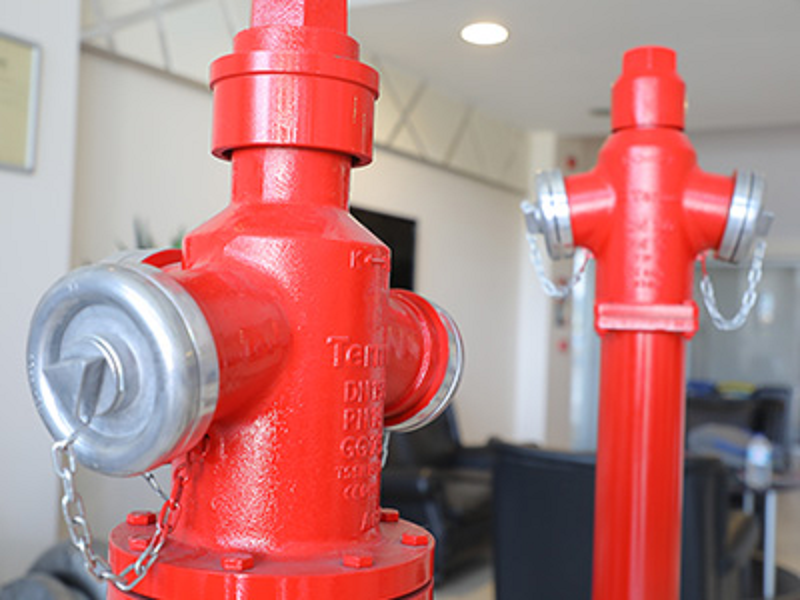
Purpose and Uses of Fire Hydrants
The primary purpose and uses of Fire Hydrants is to supply water for suppressing fire. However, they can be used for several secondary purposes like:
- Line Flushing: Due to their high flow capability and easy operation, fire hydrants can be used to flush main distribution system lines.
- Testing System: To test the hydraulic capacity of the distribution system, fire hydrants can be used.
- Other Common uses: Fire hydrants are also frequently used as a water source for commercial construction work, sewer cleaning, street construction, street cleaning, etc.
Working as a Fire Hydrant
Fire hydrants with a variety of valves and connection points are seen in many places. In the event of a fire breakout, firefighters locate the fire hydrants, connect their hoses, and then pump a large volume of pressurized water to put out the fire. A special pentagonal wrench is used to remove the valve cover of the hydrant. Then after attaching the hoses, the firefighters open the valve for the water to flow.
They usually have a connection point to hook up a fire hose and a nut or bolt to turn on which will start the flow. Every fire hydrant is essentially just an attachment to the main water line. Underneath that connects the hydrant valve through a pipe called a riser. However, normal hydrants don’t change the water pressure or flow in any way. They function as valves so firefighters can utilize the pressure in the water pipes. While all of this may sound simple the internal mechanics of a fire hydrant are a little more complex and can vary by region.
Types of Fire Hydrants and Uses of Fire Hydrants
There are two types of Fire Hydrants; Wet hydrants and Dry hydrants.
Wet Hydrant
Wet hydrants are widely used in places where there is no problem of freezing. In such types of fire hydrant systems, the water in the main supplies the hydrant close to the surface. So, in cold weather conditions, it is susceptible to freezing.
Dry Hydrant
A dry hydrant system stores the water below the ground. The Earth’s temperature is usually higher than the cold environment temperature in cold regions. So, the possibility of freezing can be prevented by this arrangement. When the dry hydrant system is required to be used, firefighters open a valve on top of the hydrant and engage their hose in it. This causes the drain valve to open inside the hydrant. This allows the water to come through which the firefighters use against the fire.
Difference between Wet barrel Hydrant and Dry barrel Hydrant
The main differences between a wet hydrant and a dry hydrant are mentioned below:
Wet Hydrant or Wet Barrel Hydrant
- Wet Hydrants are used where water-freezing issues are not present
- In the wet hydrant design, the water is placed aboveground
- A wet Hydrant is easier to construct and cheap
- Maintenance of wet barrel hydrants is easier due to easy access.
Dry Hydrant or Dry Barrel Hydrant
- Dry barrel hydrants are used in cold regions where the temperature routine drops below water freezing temperature.
- The water in the dry barrel design is kept below ground to avoid freezing.
- On the other hand, dry barrel hydrants are costlier and difficult to construct.
- Maintenance is comparatively difficult.
Components of a Fire Hydrant System
The main components that constitute a fire hydrant system are:
- Fire Fighting Pumps & Accessories
- Piping
- Panels
- Landing Valves
- Hoses
- Couplings
- Hose Reel
- Branch Pipes & Nozzles
- Fire Brigade Connections
- Wiring & Instrumentations
- Maintenance Valves


























